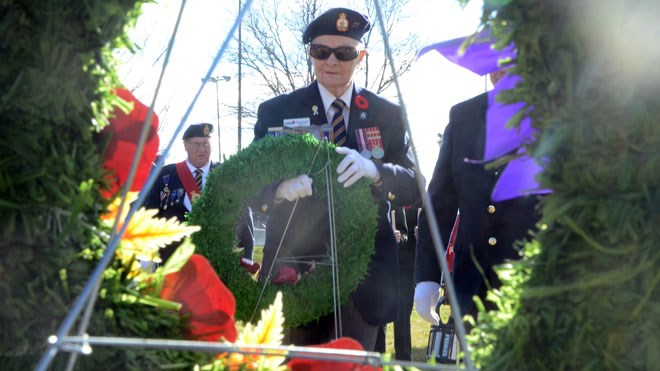In British Commonwealth countries and territories like Canada, Nov. 11 is known as Remembrance Day, while in the United States, people honour present and past military service on Veterans' Day.
Armistice Day origins
Remembrance Day was once known as Armistice Day because it marks the signing of the armistice that put an end to the hostilities of the First World War. On the 11th hour of the 11th day of the 11th month of the year, guns fell silent after more than four years of continuous warfare between the Germans and Allied troops.The armistice agreement was signed in a French train carriage at 11 a.m. Later, the carriage where the historic event took place was placed in a specially constructed building to serve as a monument to the defeat of Germany. Although it was moved by German forces and later destroyed during World War II, after that war ended a replacement carriage, correct in every detail, was rededicated on Armistice Day in 1950.
Remembrance Day evolution
Armistice Day was renamed Remembrance Day after World War II to commemorate soldiers from both world wars. It is now used as a way to pay hommage to any fallen soldier.Each year a national ceremony takes place at the Cenotaph in Whitehall, London, a monument erected as a memorial to soldiers buried elsewhere. The Queen will lay the first wreath at the Cenotaph, while others will leave wreaths and small wooden crosses.
In Canada, Remembrance Day is a statutory holiday in many provinces and territories. Official national ceremonies are held at the National War Memorial in Ottawa. Events begin with the tolling of the Carillon in the Peace Tower, during which members of the Canadian Forces participate and congregate at Confederation Square. Similar ceremonies take place in provincial capitals across the country. Very often moments of silence are offered for lost lives.
What about the poppies?
One of the unifying symbols of Remembrance Day is the poppy that is worn to honor lost soldiers. The bold, red color of the flower has become an enduring symbol of those who died so that others may be free.The poppy became a symbol for a specific reason. Some of the most concentrated and bloody fighting of the First World War took place in Flanders, a region in western Belgium. As a result of the fighting, most signs of natural life had been obliterated from the region, leaving behind mud and not much else.
The only living thing to survive was the poppy flower, which bloomed with the coming of the warm weather the year after fighting in the region had ceased. Poppies grow in disturbed soil and can lie dormant in the ground without germinating. Without the war, they may have never come to the surface.
John McCrae, a doctor serving with the Canadian Armed Forces, was moved by the vision of poppies flowering in Flanders and wrote a poem titled "In Flanders Fields." After the poem was published, it received international acclaim, and the poppy became a popular symbol of those lost in battle.
Men traditionally wear the poppy on the left side of the chest, where a military medal would be placed. Women wear it on the right side because that is where a widow would wear her husband's medals.
Remembrance Day is celebrated every year, providing people humbled by the sacrifices of soldiers an opportunity to remember those soldiers' efforts to secure freedom.
